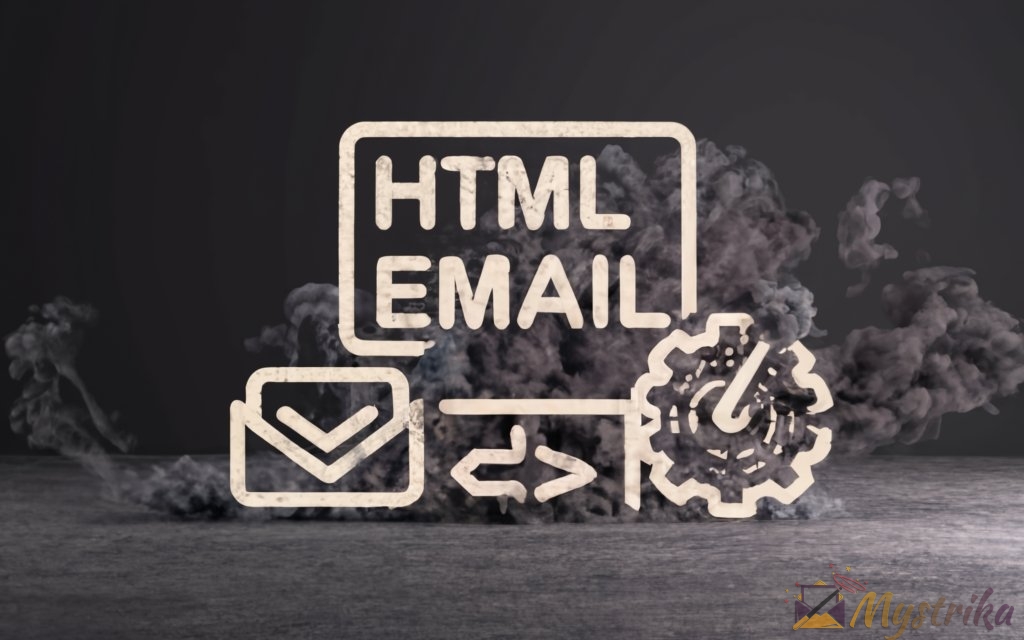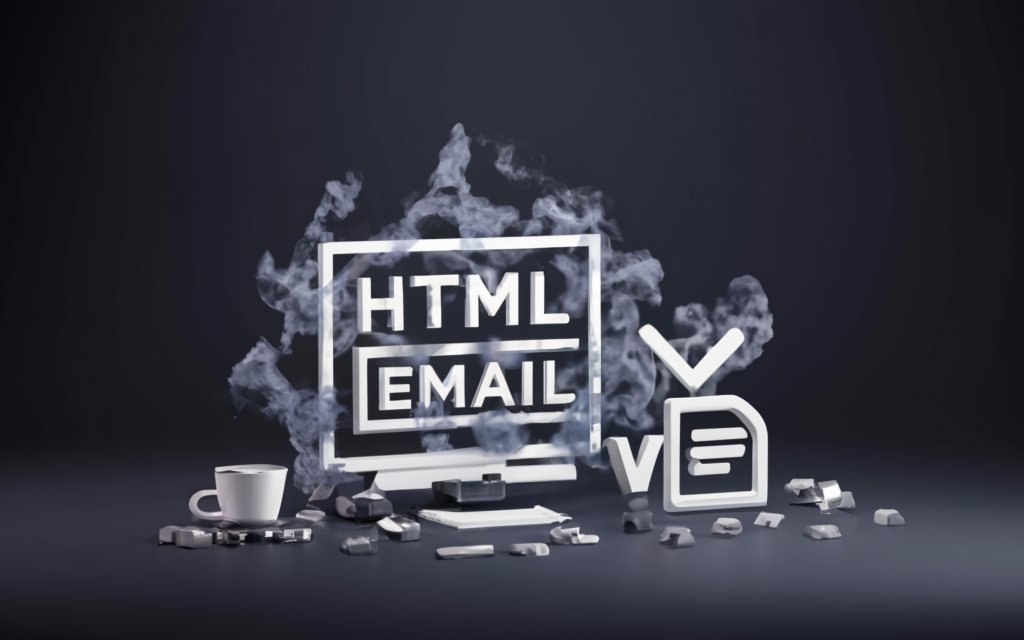Engaging subscribers across devices and inboxes requires HTML email mastery. Learn to craft responsive templates, build a quality list, avoid mistakes, and analyze metrics with this comprehensive guide.
Choosing the Right HTML Email Developer for Your Business
Selecting the perfect HTML email developer to create and code beautiful, responsive templates that engage your subscribers can be challenging. With so many options to evaluate, from freelancers to agencies, how do you ensure you make the right choice? Follow these tips when vetting HTML email developers to find the ideal partner for your brand.
Evaluating Technical Expertise and Experience
The baseline for any HTML email developer is proficiency in HTML and CSS. They should understand email design best practices, including coding for compatibility across different email clients. Ask potential developers:
- How long have you been working with HTML email specifically? General web development skills don’t always translate.
- What email clients, devices, and platforms do you test on? They should check rendering in mobile, web, and desktop clients.
- How familiar are you with CSS support issues in different email clients? Tables for layout, CSS resets, and styling tricks should not be new concepts.
- Do you code email templates directly or use a drag and drop builder? Hand coding is preferred to customize code and optimize for each client.
- Do you manually inline CSS or use an automated tool? again, manually inlining is better for email.
- What is your process for writing clean, validated HTML and CSS? Validated markup improves rendering.
- How do you handle dynamic content and personalization? Merge tags, placeholders, and coding for ESPs like MailChimp, Campaign Monitor, etc.
- Can you create modular, reusable templates and components? A library of modules speeds up future projects.
- How do you ensure email accessibility for all users? Accessible coding is now an email best practice.
Opt for a developer well-versed in coding responsive HTML emails from scratch. They should talk knowledgeably about the nuanced technical aspects of email design.
Assessing Design Skills and Creative Thinking
Of course, you want more than just a coder – you need a developer who can craft appealing, on-brand creative.
- Review their portfolio: do the samples align with your brand style and industry?
- Ask to see examples of real client work, not just mockups.
- Do they showcase a range of designs from simple promos to complex newsletters?
- Do their emails follow best practices for mobile-optimized, responsive design?
- Does their copywriting match your brand voice and tone?
- Do they integrate images, video, and graphics appropriately?
- Can they create concise, engaging content for subscribers?
Choose a developer who thinks beyond coding by demonstrating creative thinking and design skills in their work. An ideal partner will blend technical and creative expertise.
Reviewing Communication Style and Project Management
Beyond technical proficiency, the logistics of working together matter too.
- What is their preferred communication style and availability? Do they match yours?
- Can they provide status updates throughout projects? How does the review and revision process work?
- How much direction/feedback do they need versus proactive ideas?
- Do they have a workflow for collaborative design and efficient handoff?
- What project management tools do they use? Can you access assets and leave feedback?
- Do they have a timeline and roadmap to share? How many rounds of revisions are included?
- What is the final deliverable – just code, or also images, templates, etc.?
Clear communication and structured project management ensures no confusion when collaborating. Find a developer who communicates clearly and organizes projects efficiently.
Comparing Pricing and Timeframe
Finally, consider the budget and timeline needs for your projects.
- Is their pricing within your budget – hourly, per project, monthly retainers?
- How much do revisions or additional rounds cost?
- Do they have package options or custom quotes for bundled projects?
- Does the timeline work for your goals and upcoming campaigns?
- Is their pricing competitive compared to other freelancers or agencies?
- Do they have options for rush deliverables or overtime?
Discuss pricing models upfront and align on timelines for each project phase. Find a developer who is transparent about costs and can work within your budget and schedule needs.
Choosing the right HTML email developer is key for creating beautiful, coded templates that perform beautifully across all major email clients and devices. Keep these tips in mind as you evaluate technical expertise, design skills, communication styles, pricing models, and timelines. The right partner will help build and grow your email marketing program for the long haul.

Building a Quality Email List from Scratch
Growing an engaged email subscriber list takes time and strategy. Follow these proven tactics to ethically build your list from zero to thousands of double opt-in contacts interested in your brand.
Collecting Opt-In Contacts Ethically
The foundation of quality list building is consent. Never add contacts without permission or buy email lists from third parties. Instead:
- Offer an opt-in checkbox on your website: Display a checkbox on your site for visitors to willingly join your list. Make it GDPR compliant by requiring subscribers to double opt-in.
- Add a lead capture popup: Use popups and overlays to invite visitors to join at relevant times, like if they’re browsing products or content.
- Include signup forms in relevant places: Add an email signup in menus, sidebars, post footers, etc. Embed forms contextually where readers expect to see them.
- Promote during checkout: Many brands invite customers to join their list during the checkout process. Keep the opt-in voluntary.
- Collect business cards at events: If attendees allow, scan or manually enter details from any collected cards. Always seek explicit consent.
- Make unsubscribing easy: Unsubscribe links keep your list clean and engaged. The easier it is to unsubscribe, the more subscribers trust you.
Double opt-in and explicit permission ensures you’re building a reputable list ready to receive your emails. Never add bought, rented, or assumed consent contacts.
Offering Lead Magnets and Incentives
Lead magnets entice subscribers by offering something desirable in exchange for their email address. Effective options include:
- eBooks and guides: Offer a comprehensive content asset like an ebook, toolkit, or guide in your niche.
- Webinars: A high-value webinar, workshop, or training related to your product or service.
- Templates and tools: Free templates, calculators, spreadsheets, or resources relevant to your audience.
- Checklists and cheatsheets: Useful takeaways like checklists for completing tasks related to your business.
- Discounts and vouchers: A coupon code or percent off to incentivize customers and leads.
- Contests and giveaways: Sweepstakes entries and prize drawings require an email signup to enter.
- Case studies and samples: Partial case studies or product/service samples give insights without full access.
Create or repurpose evergreen content into a valuable asset behind your signup form to attract more email subscribers.
Driving Signups with Website Popups and CTAs
Once you have a lead magnet prepared, display it in popups and call-to-action (CTA) forms. Effective options include:
- Scroll-triggered popups: Popups that appear after scrolling down the page capture visitors before they leave.
- Time-delayed popups: Displaying a popup after a visitor is onsite for X seconds works well.
- Exit-intent popups: Detect when the mouse moves to leave and show a popup inviting them to join.
- Click-triggered popups: Display a popup when visitors click on particular pages, buttons, or links.
- Fixed/floating bars: A CTA footer or header stays on screen as visitors scroll to encourage signups.
- Inline forms: Embed forms contextually within blog posts and articles related to your lead magnet.
Test different popups, placements, and copy to see which convert visitors best. Follow pop-up and email signup etiquette by not overdoing it.
Promoting Your List on Social Media
Social media expands your reach beyond just website visitors. Promote your list and lead magnets on:
- Facebook and Instagram: Share signup links, run giveaways requiring email entry, showcase your lead magnet assets.
- LinkedIn: Post articles and include CTAs to download relevant lead magnets by signing up.
- Twitter: Tweet updates and share blog posts with related calls to action about building your list.
- YouTube: In video descriptions and end screens, add buttons to drive email signups.
Add email list promotions across your social channels to gain visibility. Pitch your lead magnets and give value before asking visitors to join your list.
Importing Contacts from Business Cards and Events
In-person touchpoints like events and networking are opportunities to gather email subscribers too.
- Business card drop boxes: Use a box at registration for attendees to voluntarily submit cards to opt in.
- Business card scanning apps: Apps like Evernote, CamCard, and Sansan digitize card details for easy importing.
- Lead retrieval apps: Events often use apps to capture attendee details if they opt in to receiving communications.
- Signup sheets: Pas around signup forms at tables or booths for interested attendees to add their emails.
- Badge scanning: Some events let you scan name badges to capture opted-in visitor information.
Always ask for permission before adding in-person contacts. Apps and sign-up strategies simplify gathering opt-ins at scale.
Building a quality email list requires creativity and consent. Use lead magnets, website CTAs, social promotion, and in-person techniques to ethically turn interested contacts into engaged subscribers. Test strategies and incentives to grow your list with people excited to hear from you.
Designing Responsive HTML Emails
Crafting HTML emails that engage subscribers across devices and platforms is crucial today. Follow these tips to create responsive designs that shine in every inbox.
Understanding Fluid, Scalable, and Responsive Design
There are three main approaches to optimizing HTML emails for different screens:
Fluid design: Fluid emails use percentages for image widths and table cells so content fluidly resizes to fill space on any screen width. Images shrink or stretch to fit.
Scalable design: A scalable email has a simple mobile-friendly layout that works on all devices without advanced coding. Images don’t resize.
Responsive design: Responsive email layouts detect screen size with CSS media queries and adapt layouts by swapping column structures, resizing images, changing font sizes, and more.
Responsive design takes the most work but creates the best experience optimized for every device.
Support for Media Queries in Email Clients
Media queries power responsive email design, but support varies across email clients:
Full support: Apple Mail, Android Mail, Gmail, Outlook.com, Yahoo! Mail
Partial support: AOL, Thunderbird
No support: Outlook 2000, 2007, 2010, 2013
Consider your list’s client usage data when deciding if responsive emails are worthwhile. Test thoroughly across all major clients.
Tips for Responsive HTML Emails
Follow these tips to code responsive emails successfully:
Flexible Images, Buttons, and Text Size
- Make images fluid to resize using percentages instead of fixed pixels.
- Increase font size for better readability on small screens.
- Set flexible widths for buttons to span screens.
Consistent Layouts Across Devices
- Favor single column layouts which stack content simply on mobile.
- Maintain a consistent design structure despite moving elements.
- Hide less critical content on mobile to simplify.
Clickable Links and Clear CTAs
- Avoid tight link clusters which are hard to touch on mobile.
- Set links to display:block so the entire area is tappable.
- Place important CTAs above the fold so they are immediately visible.
Testing on Various Screen Sizes
- Test thoroughly on popular mobile, tablet, and desktop sizes.
- Send test emails to check rendering before full launch.
- Use a service like Litmus to test across dozens of clients and screens.
Media Query Example
Here’s sample media query code to create responsive fonts and images:
/* Default styles first */
.body {
font-size: 18px;
}
img {
width: 600px;
height: 300px;
}
/* Media Queries */
@media screen and (max-width: 480px) {
.body {
font-size: 22px;
}
img {
width: 100% !important;
height: auto !important;
}
}This increases text size on mobile and makes images fluid to fit the screen.
Responsive email design takes testing and effort but delivers the best experience for subscribers. Follow these tips to craft HTML emails that engage and convert on any device. With some CSS media query tricks, you can build responsive templates that shine across the diverse email landscape.

Choosing the Best Email Design Software
The right email design software makes creating beautiful, responsive templates easy. Compare these features when selecting the best platform for your brand.
Drag and Drop Builders for Responsive Design
Look for an intuitive builder interface that allows responsive design:
- Drag and drop blocks for easy layout
- Mobile-friendly templates and themes
- Resize images and buttons for different screens
- Adjust fonts and text size per device
- Columns and sections format for mobile
- Live previews to visualize responsiveness
Prioritize builders with responsive capabilities built-in versus manual custom coding.
Integrations With Email Providers
Choose a design platform that integrates with your email service provider:
- MailChimp integration to sync templates
- Ability to connect domains for sending
- Support for major ESPs like Constant Contact, Campaign Monitor, etc.
- Options to export HTML files or upload directly
- Pixel-perfect compatibility with the ESP’s rendering
This ensures designed templates transfer correctly to your ESP and subscribers.
Advanced Customization and Coding
Evaluate how much design flexibility and control the platform provides:
- Modify any template section easily
- Edit HTML and CSS directly in the platform
- Add your own CSS and styles
- Customize fonts, colors, and branding
- Additional section and component options
- Ability to create new templates from scratch
- Tools for developers to build complex emails
Choose the level of control you need – from easy drag and drop to full code access.
Pricing Considerations and Options
Compare pricing models across email design platforms:
- Free, freemium, and paid tiers
- Monthly or annual subscription plans
- Per-email and package pricing
- Unlimited use for one monthly cost
- Discount for annual commitment
- Email volume or subscriber limits
- Free trial period to test features
Evaluate the budget and email volume you need to determine the best value.
Top Email Design Platforms
Top options to consider include:
- MailChimp Email Designer (free to $199/mo plans)
- Stripo (free limited version, paid from $9/mo)
- Unlayer (from $12/mo)
- Mailmodo (from $15/mo)
- Oxygen (from $19/mo)
- Postcards (from $9/mo)
Choose user-friendly design software that makes visually engaging responsive emails easy for your marketing team. Seamless integrations with major ESPs and flexibility for customization are key features to enable success.
Optimizing Your HTML Emails for Engagement
Once you’ve mastered responsive HTML email design, make sure your emails captivate and convert subscribers.
Crafting Compelling Subject Lines
A strong subject line gets your email opened. Tactics include:
- Urgency: Inspire quick action with power words like “Today only” or “One day sale.
- Curiosity: Make readers wonder about intriguing phrases like “You won’t believe this!”.
- Specificity: Add concrete details like “30 birthday freebie ideas”. Vague lines have lower open rates.
- Relevance: Include keywords and topics tied to your contents like “Our best recipes for summertime”.
- Personalization: Merge first names and other specifics to the recipient like “Hey [First Name], exclusive sale for you!”.
- Value: Summarize the tangible benefits readers get by opening like “Get 20% off your next order”.
Subject line A/B testing uncovers which techniques work for your list.
Personalizing Content With Merge Tags
Merge tags add dynamic text specific to each reader. Options include:
- Name: Insert first name, last name, or full name.
- Location: Personalize based on city, state, zip code, or country.
- Past activity: Reference past purchases, content downloads, event attendance.
- Demographics: Age, gender, interests, job title, industry, etc.
- Dates: Anniversaries, birthdays, first purchase date, churn risk date.
- Firmographics: Company name, size, revenue, etc.
Personalized copy has higher engagement as it feels tailored to them specifically.
Using Attention-Grabbing Visuals
Compelling images increase clicks and engagement in emails:
- Hero images: Feature a bold image front and center to command attention.
- Infographics: Display engaging stats, facts, and data visually.
- Action shots: Show your product or service actively being used.
- Behind-the-scenes: Provide a glimpse inside your brand, office, or processes.
- Product images: Showcase inventory in lifestyle scenes tied to your brand.
- Memes and pop culture: Relate to subscribers through current event references.
Vivid imagery aligned to your brand cuts through the inbox clutter.
Improving Readability On Mobile
Optimize copy for mobile skimming:
- Concise paragraphs: Break up text into short paragraphs with line breaks.
- Short sentences: Use crisp, direct sentences of 10-15 words maximum.
- Highlighted text: Bold or underline key info for easy mobile scanning.
- Bulleted lists: Unbroken blocks of text are hard to digest on mobile.
- Left-aligned text: Reading across full page widths strains eyes on small screens.
Review your copy as though reading word-by-word on a phone. Streamline content accordingly.
Placing Clear CTAs Above the Fold
Calls to action should be obvious on mobile:
- Define one CTA per campaign: Don’t distract with too many competing CTAs.
- Set contrasting colors: Use colors that make the CTA stand out.
- Large tap targets: Size CTAs for easy tapping on mobiles.
- Above-the-fold placement: CTAs placed lower have reduced visibility on mobiles.
- Limit the need to scroll: Scrolling loses readers who won’t swipe on mobile.
On mobile, emails show content as it loads down the page. Place your call to action high up to be seen immediately.
Optimized copy, compelling visuals, personalization, and clear mobile CTAs boost email engagement. Test approaches to determine what resonates most with subscribers across devices.

Avoiding Common HTML Email Mistakes
With responsive design, dynamic content, and diverse inboxes, it’s easy for HTML email errors to creep in. Avoid these common pitfalls.
Ensuring Consistent Branding and Styling
Keep your HTML emails on-brand:
- Match brand colors: Use brand palette hex codes or RGB values for all colors.
- Include logo: Insert your logo imagery cleanly at full resolution.
- Maintain font styles: Set global styles for branded fonts, sizes, colors.
- Cohesive imagery: Photos should feel cohesive and evoke your brand aesthetic.
- Consistent layouts: Structure, spacing, and alignment should align to your brand guide.
- Appropriate tone: Copy should reflect your brand’s messaging and voice.
With good templates and stylesheets, branding should stay consistent while allowing for design flexibility.
Testing Rendering Across Email Clients
Check display and functionality across major inboxes:
- Apple Mail – iOS and MacOS
- Outlook – Windows and MacOS versions
- Gmail – Web, iOS, Android
- Yahoo – Web, iOS
- AOL – Web, iOS
- Thunderbird – Windows, MacOS, Linux
Use a testing tool like Litmus to preview and fix rendering issues before launch.
Confirming Links and Images Display Correctly
Validate links and images:
- Click every link to test connectivity and redirects.
- Enable images and check they render crisply.
- Mouse over links to preview destinations.
- Scan for broken images and accidentally swapped links.
- On mobile tests, tap links and buttons to check sizing.
With responsive designs, double check images resize and links/buttons work as expected per device.
Checking Accessibility for All Users
Consider diverse audiences:
- Screen reader friendly alt text for all images.
- Sufficient color contrast for readability.
- Keyboard navigation enabled to tab through links and buttons.
- Headings, lists, and semantic markup for clear structure.
- Alt text for decorative images also for clarity.
Accessible emails are usable for subscribers with disabilities. Review accessibility guidelines.
Sending Test Emails Before Full Send
Do comprehensive tests beforehand:
- Send test emails to personal and professional accounts you own across major clients.
- Ask a team member to review your test for any errors or inconsistencies.
- Make final tweaks based on tests before scheduling your main campaign launch.
Don’t just preview – send actual test emails and confirm how recipients see your message.
Paying attention to detail in your HTML emails prevents embarrassing mistakes and issues undermining your campaigns. Consistent branding, working components, accessibility, and testing gives emails the best chance for smooth delivery and engagement.
Measuring the Performance of Email Campaigns
Understand how your carefully crafted HTML emails are resonating with subscribers by tracking these essential metrics and insights.
Tracking Open, Click-Through, and Bounce Rates
Core metrics provide an overview of email effectiveness:
- Open rate: Percentage of targeted subscribers who opened the email. Industry averages range between 15-25%.
- Click-through rate (CTR): Percentage who clicked any link within the delivered email. Benchmark around 2-3%.
- Bounce rate: Percentage of emails bounced back due to invalid addresses. Aim for under 2%.
Segment and compare rates by factors like subscriber attributes, list, timing, subject line, and design version.
Analyzing Conversion Rates From Email
Measure email impact on business goals like:
- Sales revenue: Track revenue from email attribution links using UTMs.
- Registrations: See how many email clicks convert to event signups.
- Demo requests: Email CTA clicks leading to contact form fills.
- Page visits: Use UTMs to see email-driven landing page traffic.
- Downloads: Count asset downloads from email content upgrade CTAs.
Connect the dots between email actions and desired outcomes.
Comparing Results Across Segments and Lists
Evaluate the same campaign on different segments:
- New vs existing subscribers
- Mobile vs desktop opens
- Weekday vs weekend performance
- Time-of-day sent
- Contact attributes like buyer stage, location, etc.
See what works for whom and learn for future personalization.
Optimizing Campaigns Based on Insights
Let data guide optimization:
- Improve subject lines and content based on open and CTR rates.
- Adjust segmentation if certain groups over/underperform.
- Try new lists and segments for each campaign.
- Test new timing like day of week or time of day.
- Experiment with layout, images, and text based on engagement.
Measure, analyze, and tweak regularly to keep improving email metrics.
Robust email analytics transforms raw data into actionable insights to guide campaign creation. Track subscriber behaviors, pinpoint high/low performers, uncover optimization opportunities, and ultimately boost email ROI.
Here are the key takeaways for the article on mastering HTML email development, list building, and responsive design:

Key Takeaways
- Carefully vet HTML email developers on technical expertise, design skills, communication, and budget fit. The right partner ensures success.
- Build your email list ethically through opt-ins, lead magnets, website popups, events, and social promotion. Quality trumps quantity.
- Make emails responsive with fluid, scalable, or adaptive designs optimized for any device. Test thoroughly across email clients.
- Choose email design software with an intuitive builder, ESP integrations, customization features, and affordable pricing.
- Grab attention with strong subject lines, compelling visuals, succinct copy, judicious personalization, and clear mobile CTAs.
- Avoid mistakes through consistent branding, working components, accessibility for all, and extensive pre-send testing.
- Analyze opens, clicks, bounce rates, conversions, and segment variations to refine campaigns based on data-driven insights.
- Apply proven list building, design, optimization, and measurement tactics to take your email marketing to the next level in 2023. Here are some frequently asked questions related to HTML email development, list building, and responsive design:
Frequently Asked Questions
What are some tips for choosing an HTML email developer?
When selecting an HTML email developer, look for expertise in HTML, CSS, and coding emails specifically. Review their portfolio for examples of responsive design. Ask about their email development process and tools. Compare pricing models and timelines.
What’s the best way to build an email list?
Use permission-based methods like website opt-in checkboxes, lead magnet popups and forms, and collecting business cards at events. Promote your list on social media. Import existing contacts like customers who have opted-in. Incentivize referrals. Capture signups during purchases.
How do you make HTML emails responsive?
Use a mobile-first single column layout. Make images, buttons, links, and text elements flexible using percentage widths. Increase text size for smaller screens. Employ CSS media queries to adjust styling based on screen size. Test on various devices and email clients.
What should you include in an email marketing campaign?
Effective email campaigns have cohesive design, compelling subject lines, succinct copy, judicious use of images, segmentation and personalization, mobile optimization, clear call-to-action buttons, and links for sharing and unsubscribing easily.
What metrics are important for email marketing?
Track open, click-through, and bounce rates. Analyze how emails convert to desired goals like sales, leads, and downloads. Review performance by list segment. Use insights to optimize future campaign design, segmentation, timing, subject lines, and contents.
How can you avoid common email mistakes?
Mistakes can be avoided by ensuring brand consistency, validating links/images, comprehensive testing, improving accessibility, getting feedback from team members, and sending test emails before full deployment.
What are some top HTML email design tools?
Some top responsive email design platforms are MailChimp, Oxygen, Stripo, Mailmodo, Postcards, and Unlayer. Many provide mobile-friendly templates, drag and drop builders, customizations, ESP integrations, and affordable subscription plans.

